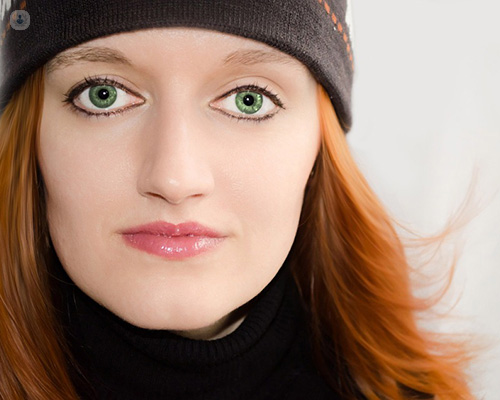Acne scar treatment: how laser skin resurfacing is a safe way to rejuvenate your skin
Written by:Pigmented spots, spider veins, acne scars and open pores are unsightly lesions on our skin that have a quick and effective solution: laser treatment. But not every laser is suitable for everything. Here we explain which laser is the most appropriate for each case.

Types of skin lesions and the type of laser used
Acne and Surgical Scars: To treat scars, whether acne, surgical or traumatic, a non-ablative fractional laser is used over 5 sessions (1 session every 30 days). An up to 80% improvement is usually seen. This is achieved by remodelling the old collagen (poorly formed in the case of keloid scars) and inducing the formation of a new collagen of higher quality.
Age spots: These are spots that appear on areas of the skin that are often exposed to the sun, and have a round shape with irregular margins. Their origin relates to age or excess exposure to the sun. An Alexandrite Laser of Variable Pulse or Q-switch is used to eliminate age spots in a single session.
The laser light destroys cells with an excess of pigment without damaging the surrounding tissue. After the laser session, a scab the same size of the original spot will form, which disappears in about 5-10 days.
Vascular spider veins, couperosis, or leg veins: These are dilatations in small veins on the face or body (most commonly the legs). They are treated with the Nd-YAG vascular laser, in 1-4 sessions depending on the size, depth of injury and skin type.
Ruby dots: These are red dots which usually appear on the neckline and back. They are capillary angiomas and in the majority of cases occur at childbirth but can form in adults. Ruby dots can spread if not treated once they appear. To eliminate the ruby dots, an Nd-YAG vascular laser is used. In a single session, they are eliminated using the light from the laser. After the treatment, the spot remains a darker colour and is reabsorbed by the body without forming a crust.
Stretch marks: Stretch marks are whitish or reddish skin lines that are mainly located on the abdomen, thighs and chest. These are "scars" on the skin with a "broken" appearance. At the histological level, there is an atrophy of the epidermis with fibrosis of the dermis and rupture of elastic fibres and collagen. They appear in different circumstances with pregnancy, puberty and rapid weight gain being, the main causes. They may also be associated with prolonged use of some drugs such as corticosteroids.
When the stretch marks are formed, the treatment results will be better in the vascularised phase (when the striae are red) than in the scarring phase (when the striae are white). Laser treatment can achieve very satisfactory results, which meet the expectations of patients, in both red and white striae.
With a non-ablative fractionated laser used over five sessions (1 every 30 days) excellent results can be achieved:
- Striae are shorter and narrower
- Skin has a more even tone and texture with a reduction in colour in red striae and reduce atrophy in white striae.


